LONVI | The Senotherapeutic Company
PCC1 Senolytic Complex | 199 Clinic edition
PCC1 Senolytic Complex | 199 Clinic edition
Couldn't load pickup availability
3-Day Monthly Protocol
Data-driven. Third-party tested. Human clinical validation (preprint under peer review).
Natural PCC1 is a data-driven, plant-based supplement designed to support healthy cellular function through dual senomorphic and senolytic pathways.
An early human study (preprint under peer review, n=17, ages 50–86) reported measurable improvements in markers associated with cellular senescence within just 3 days. Participants showed reductions in p21 (–46.9% median), SA-β-gal (–37.4% median), and key SASP factors (IL-6, IL-8, VEGF, TGF-β1). No adverse events were observed.
Superior Safety Profile
Extensive preclinical data show no hematologic toxicity, organ dysfunction, or immune suppression—key advantages over synthetic senolytics such as Navitoclax (linked to thrombocytopenia) and Dasatinib (linked to pleural effusion, arrhythmias).
Suggested Use
Take 3 capsules daily for 3 consecutive days, preferably after a meal.
Repeat this 3-day cycle monthly, or as directed by your healthcare professional.
Caution
Do not exceed the recommended dose.
Consult your healthcare professional if you are pregnant, nursing, under 18, have a medical condition, or are taking medication.
Keep out of reach of children.
Storage
Store in a cool, dry place below 25 °C / 77 °F.
Refrigeration is optional
Share
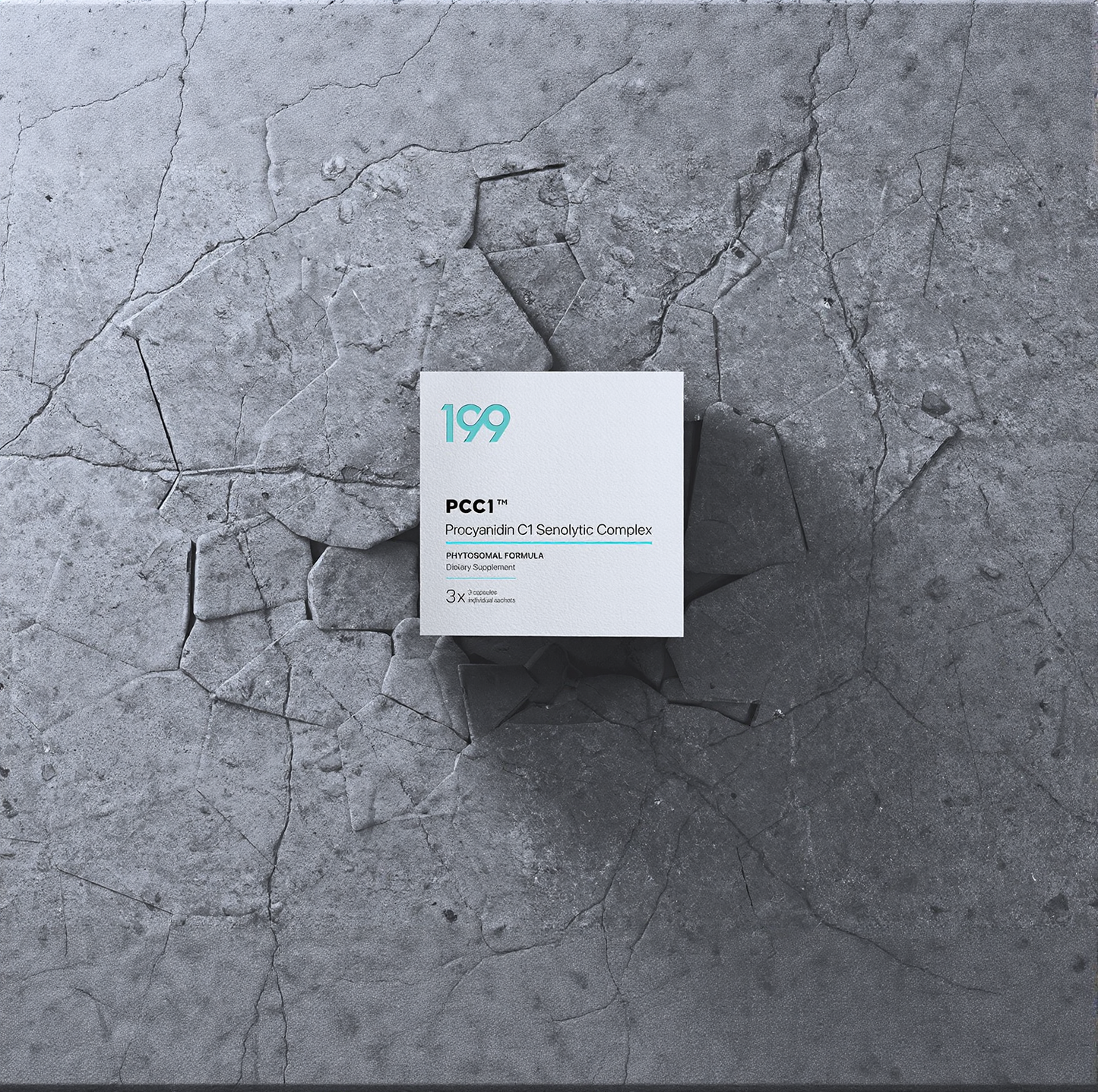
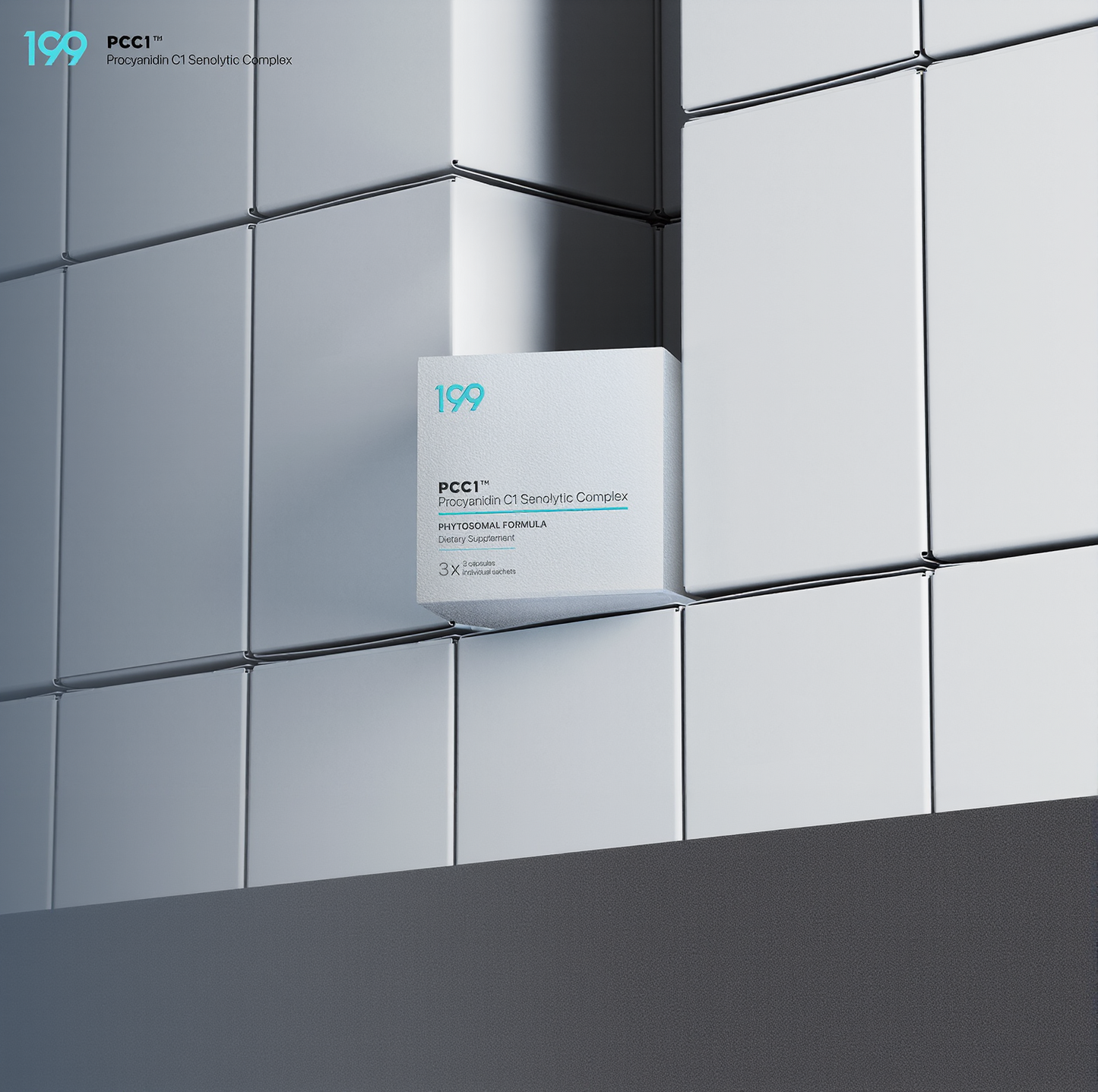

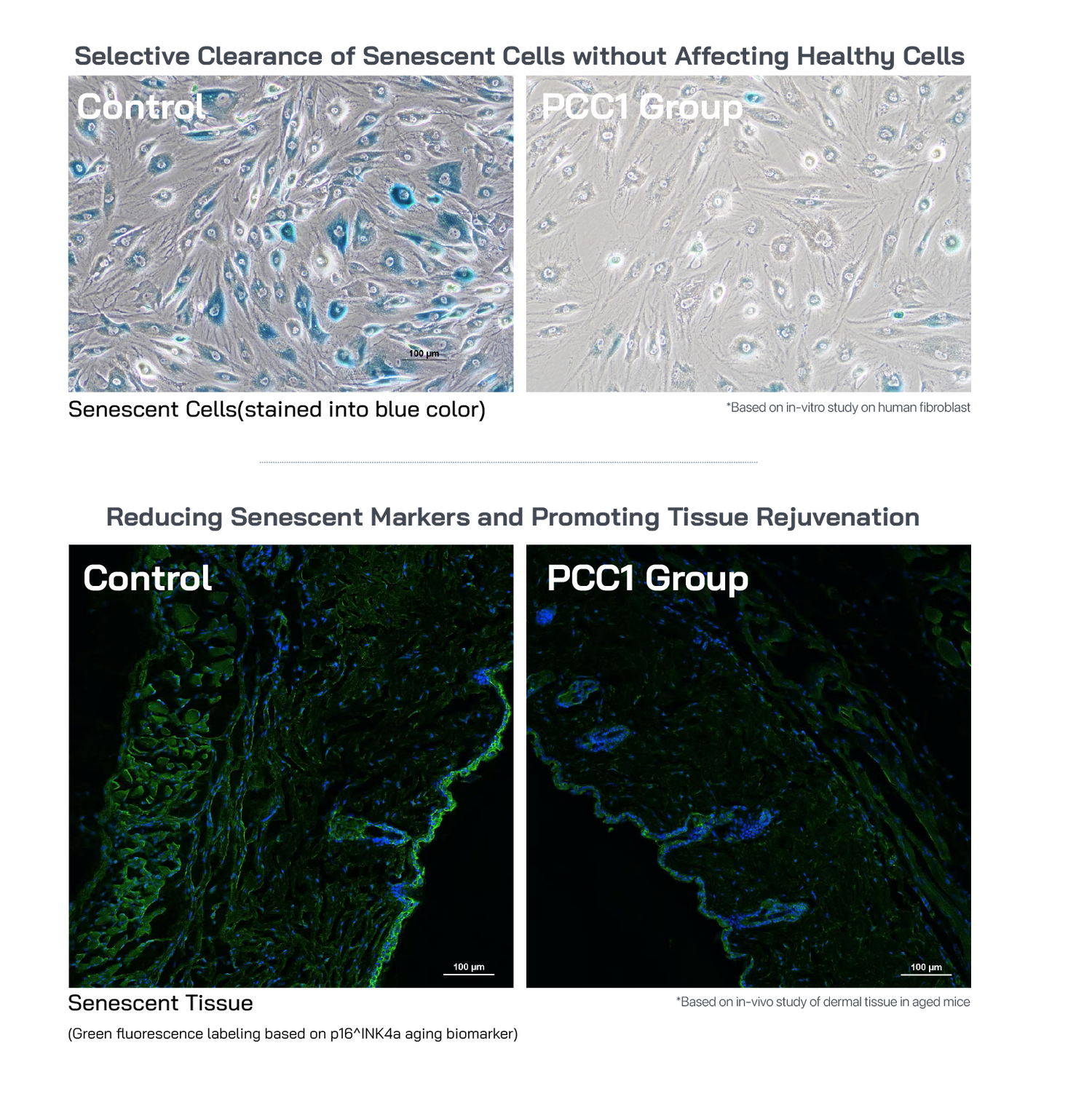
Supports Healthy Cells, Targets Senescent Ones
PCC1 has been shown in preclinical models to help clear aged cells while protecting healthy ones, supporting signs of skin and tissue renewal. Evidence comes from lab and animal studies.
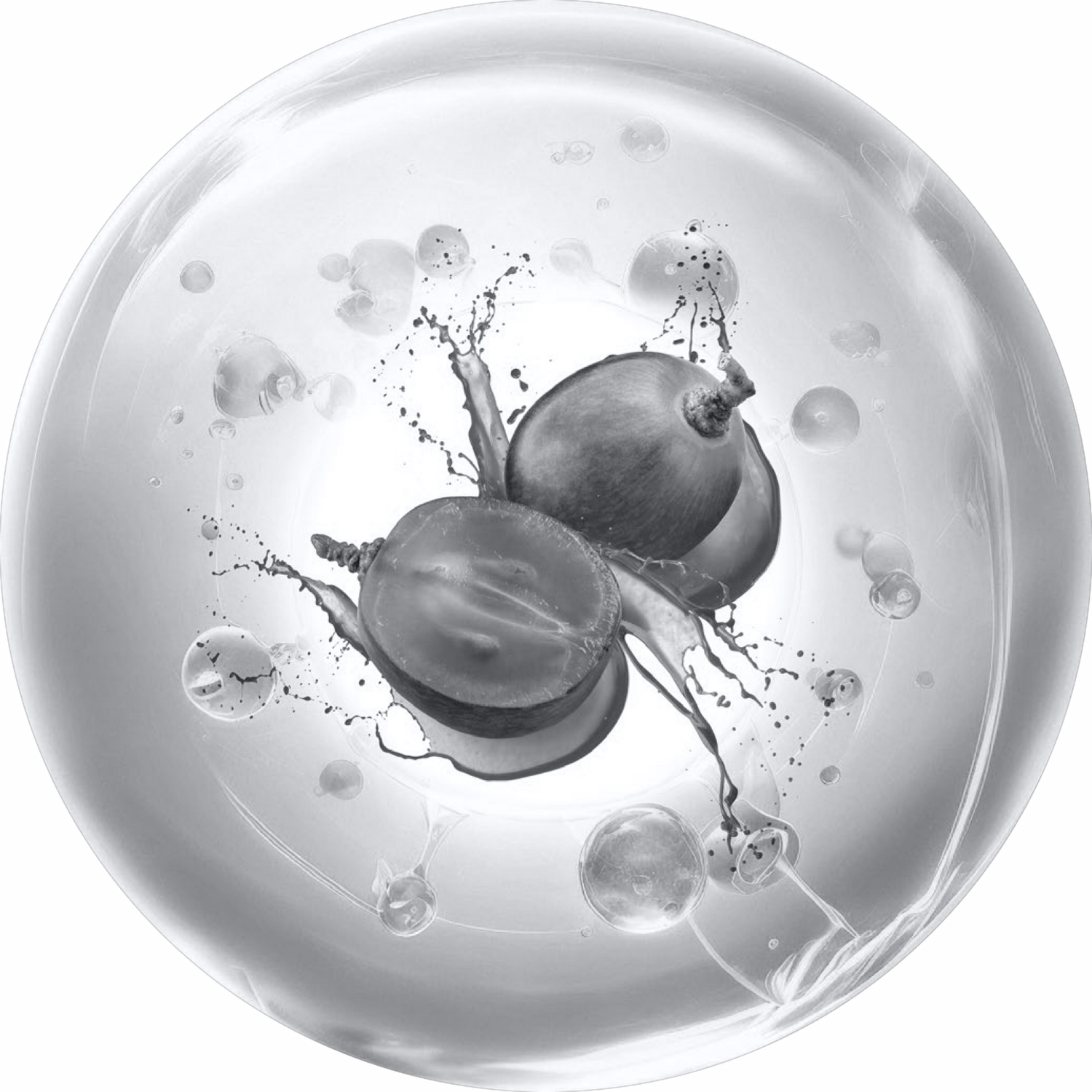
What is PCC1 (ProcyanidinC1)?
Powerful Natural Composition
PCC1 is derived from grape seeds and pine bark, making it one of the most potent procyanidins. It has been safely consumed for generations, standing the test of time.
Targeted Clearance of Senescent Cells
PCC1 selectively eliminates senescent cells, promoting healthy aging and cellular rejuvenation.
Proven Safety
Long-term dietary use has confirmed PCC1ʼs safety, highlighting its potential therapeutic value in longevity and health optimisation.
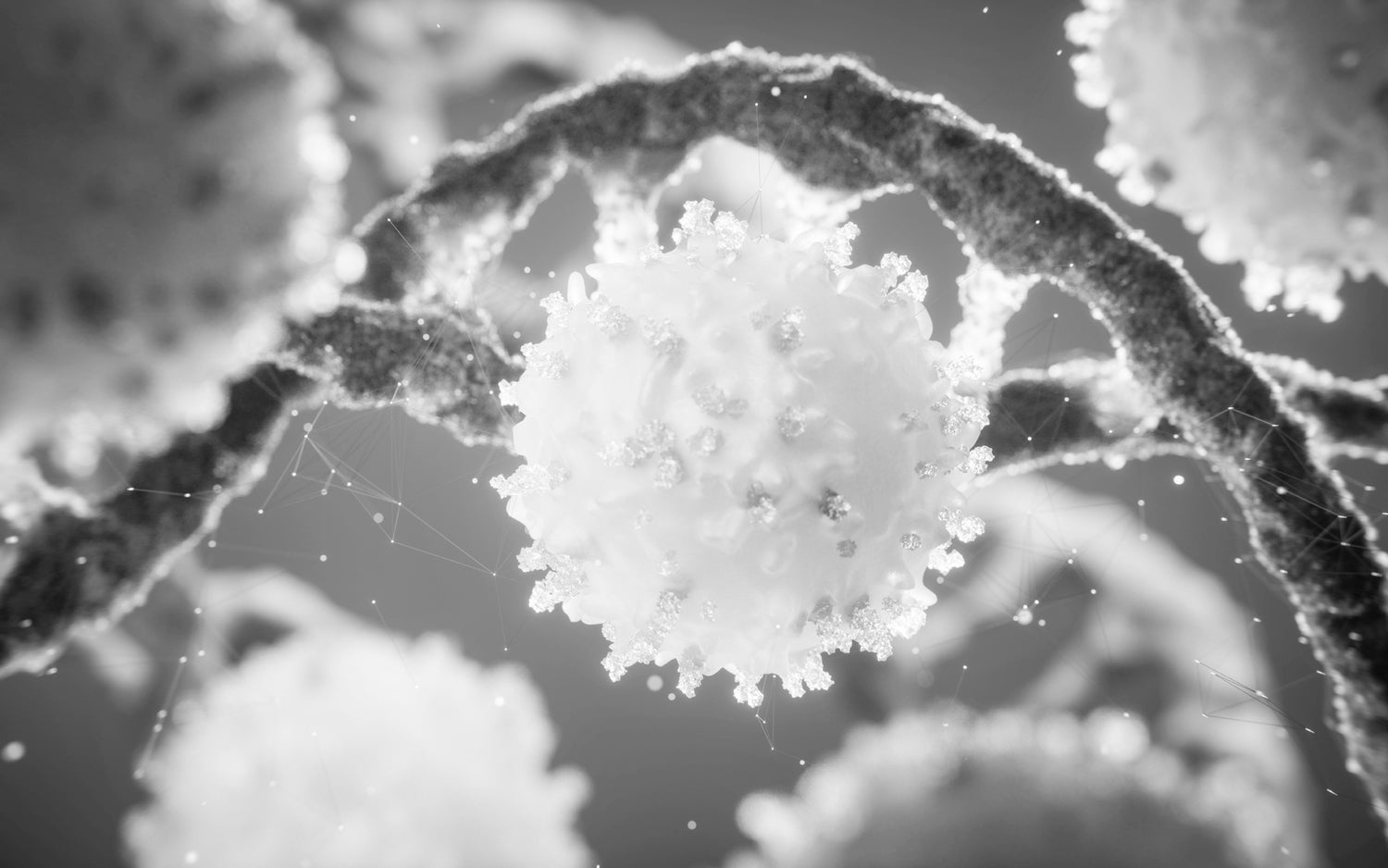
What is Senescent Cell
Senescent cells originate from normal cells but enter a metabolic arrest phase (G1 phase) where they neither proliferate nor die. They can even attack surrounding healthy cells, causing them to become senescent as well. Due to this characteristic, they are often referred to as “Zombie Cells.”
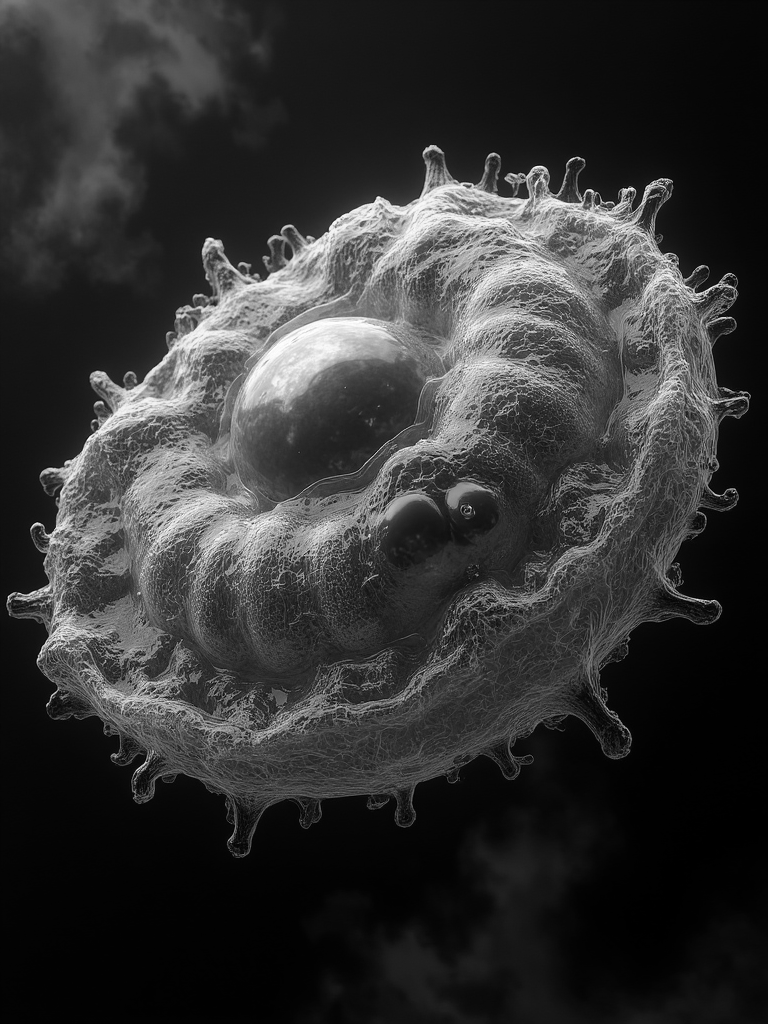
What are the Factors That Trigger or Promote Cellular Senescence?
Cellular senescence can be triggered by various stressors, including DNA damage, metabolic stress, chronic inflammation, and tissue injury.
· DNA damage, such as that caused by radiation or replication errors, activates cellular checkpoint pathways that halt cell division.
· Metabolic stress, often resulting from mitochondrial dysfunction or nutrient imbalance, disrupts normal cellular functions and promotes senescence.
· Chronic inflammation, driven by persistent harmful stimuli, creates a pro-senescent environment through inflammatory cytokines and oxidative stress.
· Lastly, tissue damage—whether mechanical or chemical—can induce senescence as a protective mechanism to prevent the proliferation of potentially compromised cells.
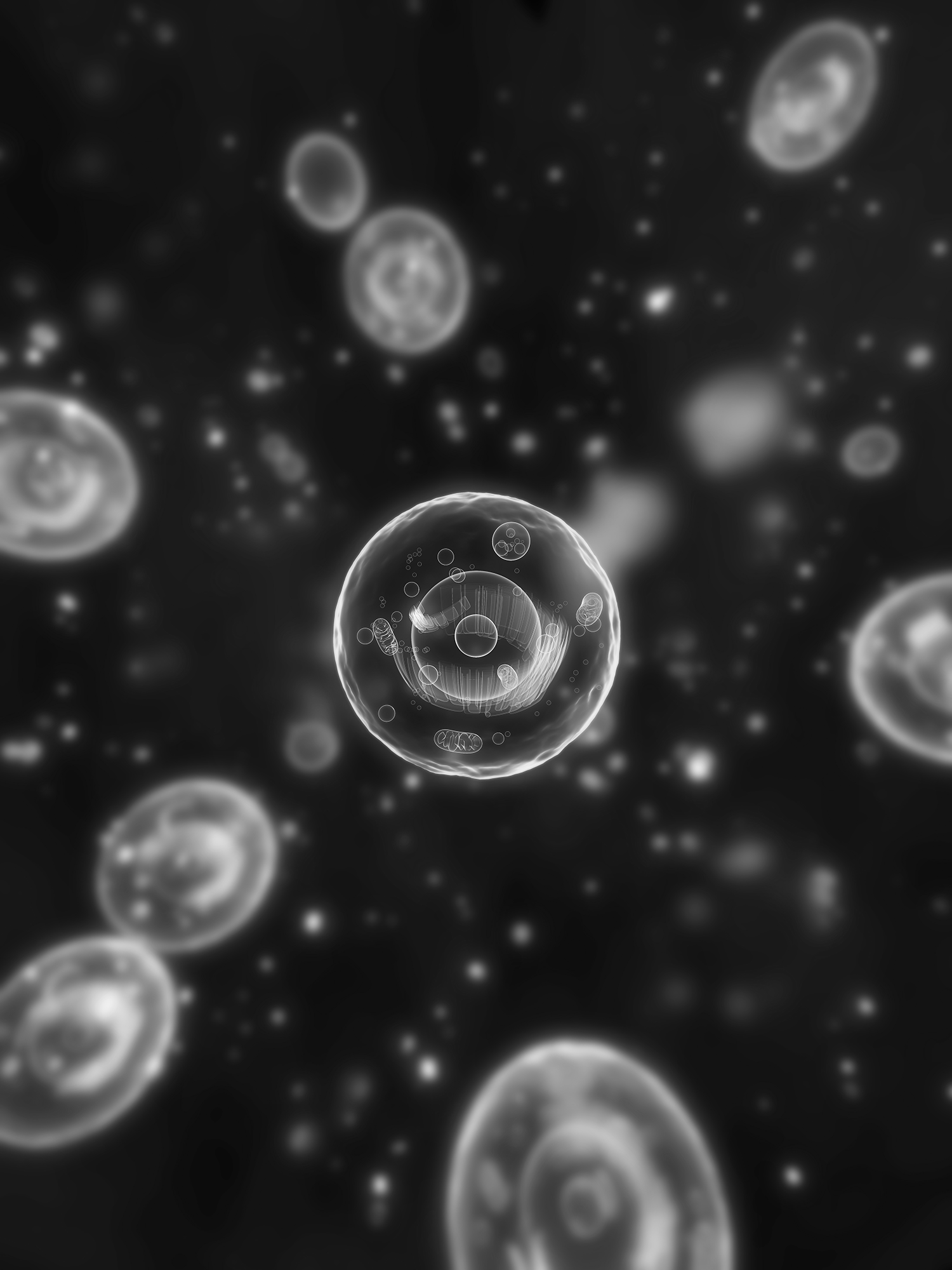
Do Senescent Cells Affect Healthy Cells?
Senescent cells continuously secrete senescence—associated secretory phenotype (SASP) factors and inflammatory signals such as reactive oxygen species (ROS), which induce senescence in surrounding cells. This process amplifies the spread of senescent cells, leading to a bystander effect.

Do Senescent Cells Naturally Undergo Apoptosis?
Protected by senescence—associated anti—apoptotic pathways (SCAPs),senescent cells evade natural cell death. Due to their SASP secretions, they persist in biological environments, avoiding clearance by the immune system.


